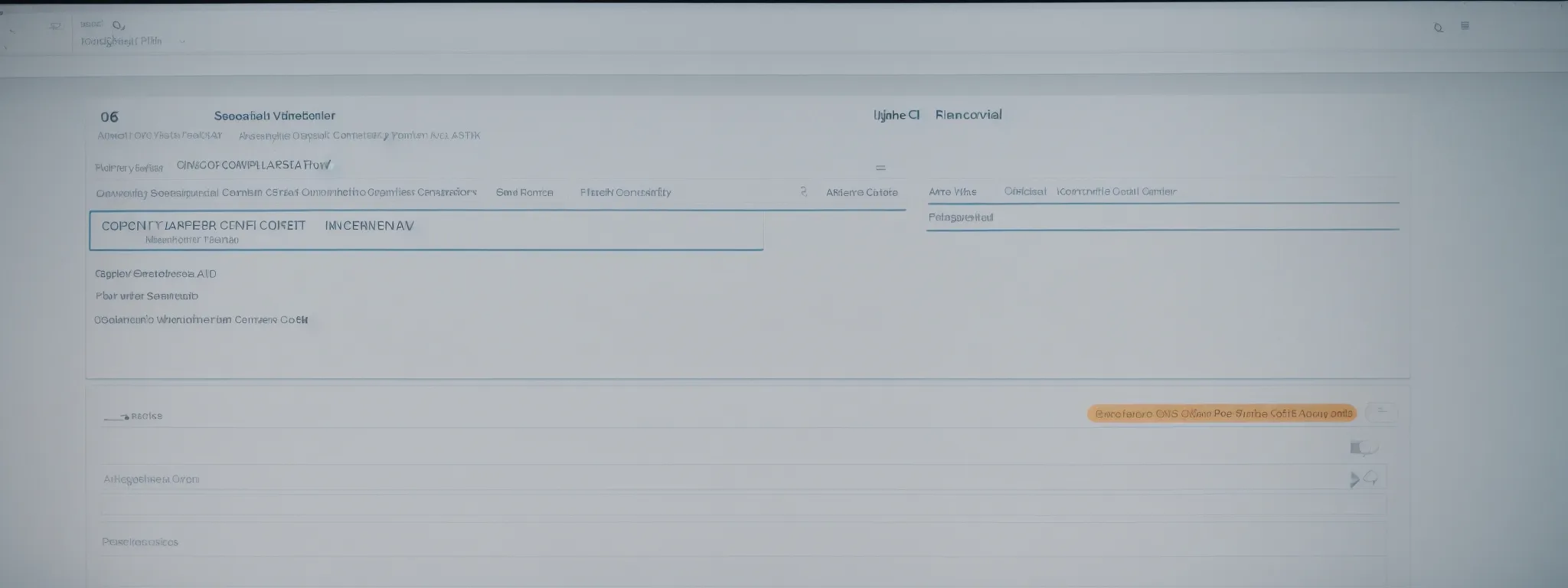Content Semantic SEO
Unlocking the Power of Content Semantic SEO for Enhanced Search Visibility In the dynamic landscape of search engine optimization, Semantic SEO stands as a pivotal component, transforming […]
Unlocking the Power of Content Semantic SEO for Enhanced Search Visibility
In the dynamic landscape of search engine optimization, Semantic SEO stands as a pivotal component, transforming how content is indexed and served to users.
By interweaving a semantic layer into your SEO strategy, LinkGraph harnesses the full potential of semantic search engines, aligning the intricacies of human language with machine learning systems for significantly improved search rankings.
Their approach pivots around understanding user intent, building semantic networks within content, and optimizing the semantic keyword landscape to boost relevance in the eyes of search algorithms.
As appealing to RankBrain and Google’s Hummingbird becomes ever more essential, the adoption of Semantic SEO is no longer a luxury; it’s a requisite for any content marketing strategy aiming for the summit of search engine results pages (SERP).
Keep reading to delve into the transformative power of Semantic SEO and how it can elevate your site’s visibility.
Key Takeaways
- Semantic SEO Shifts the Focus From Keywords to Context and User Intent, Optimizing for Relevance
- LinkGraph’s SEO Services Utilize Semantic SEO and Search Atlas to Enhance Search Engine Visibility and User Engagement
- Schema Markup and Strategic Internal Linking Are Key to Successfully Signaling Content Relevance to Search Algorithms
- Monitoring Organic Search Rankings and Analyzing User Behavior Are Essential for Measuring and Refining Semantic SEO Strategies
- Reporting on the ROI of Semantic SEO Provides Businesses With Actionable Insights for Decision Making and Online Growth
Understanding Semantic SEO Fundamentals

In the realm of search engine optimization, a paradigm shift is unfolding, pivoting away from the conventional focus on keywords to a broader, more nuanced approach.
This shift is at the core of Semantic SEO, which aims to understand not just the letter, but the spirit of user queries.
By exploring Semantic SEO’s principles, one discerns the importance of context and user intent, revealing why a focus on topics and subtopics is becoming pivotal for achieving Enhanced Search Visibility.
As Semantic SEO transcends the boundaries of single keywords, it beckons marketers to delve into the semantic network of related concepts, ensuring content aligns more closely with the searcher’s needs and the evolving search algorithm’s demand for relevance.
Exploring the Concept of Semantic SEO
LinkGraph’s SEO Services illuminate the path by embracing the heart of the Semantic Search Engine. Through their tools, such as Search Atlas, the process involves analyzing the semantic network—a web of associated meanings and concepts relevant to the searcher’s query.
| SEO Element | Traditional SEO Approach | Semantic SEO Approach |
|---|---|---|
| Keywords | Target specific, repeated keyword phrases. | Focus on topic clusters that capture a range of related terms and user intent. |
| Content Creation | Create content to match exact search terms. | Develop topic outlines to address a semantic web of subtopics and their naturally occurring language variations. |
| Search Algorithm | Optimize for keyword density and placement. | Align with RankBrain, Hummingbird, and NLP for more intuitive content relevance. |
Employing Semantic SEO techniques, LinkGraph’s approach comprehends the intent behind search queries, surpassing base-level keywords to offer a richer, more relevant experience for the user. Semantic keyword selection and content marketing strategy combine to form a user-centric SEO Blueprint, culminating in a marked rise in search engine rankings.
The Shift From Keywords to Topics
In the burgeoning field of search engine optimization, there is a noticeable migration from rudimentary keyword stacking to a far more sophisticated blueprint embodying Topic Clusters. LinkGraph’s SEO framework exemplifies this transition by emphasizing the sculpting of extensive web content around central themes, catering to a diversity of related search terms that echo the natural inquiries of the user.
Inherent in this strategic shift lies an acute attunement to user experience; LinkGraph’s adept manipulation of Semantic SEO reflects an unwavering commitment to satisfying user intent. It is through meticulous crafting of semantic networks that the organization nurtures a deep connection between the user’s goals and the content presented, resulting in a harmonious alignment with the dynamic landscape of organic search engine results.
Semantic SEO: Beyond Single Keywords
Grasping the essence of Semantic SEO mandates a departure from the dated practice of peppered keyword insertion to embracing the semantic keyword panorama. LinkGraph’s SEO services proficiently leverage semantic search intricacies, acknowledging that significance is derived from understanding the comprehensive thematic canvas and not just isolated keywords.
Navigating the nuanced landscape of search queries, LinkGraph’s innovative strategies reflect a profound recognition that user experience and search rankings are influenced by a seamless integration of context and language within content:
- Initiation of a deep semantic analysis to unearth the heart of the search intent.
- Construction of robust topic outlines, woven with pertinent subtopics to form a knowledgeable and coherent content piece.
- Integration of the emerging natural language processing technologies to mirror human thought patterns in content.
How Semantic SEO Enhances Search Visibility

In the dynamic arena of digital information, Semantic SEO emerges as an indispensable tool for increasing the visibility of web content.
Anchoring itself in the profound capabilities of understanding and interpreting the nuances of language, Semantic SEO propels content beyond the surface-level cues to resonate deeply with search engine algorithms and the needs of the audience.
By refining content discoverability, enhancing relevance, and streamlining user engagement, this approach fine-tunes the digital presence of an organization’s offerings, ensuring that every piece of content not only reaches its target audience but also fosters meaningful interactions.
Boosting Content Discoverability With Semantic SEO
LinkGraph’s precision in deploying Semantic SEO bolsters the prominence of content within the clutter of search results. Their adeptness in honing semantic networks and context-driven strategies propels the visibility of web pages, ensuring they emerge to meet the user precisely at the point of their query-fueled journey.
The strategic deployment of Search Atlas leverages Semantic SEO to clarify and emphasize the core message of a brand’s digital narrative. By focusing on Entity SEO and thematic consistency, LinkGraph facilitates a direct path for users, not only to locate but to engage fully with the most pertinent and compelling content, raising the bar for search visibility.
Enhancing Content Relevance With Semantic Techniques
LinkGraph leverages the intricacies of Semantic Techniques to refine the relevance of content, ensuring a synergy between user search patterns and the information delivered. Through strategic semantic keyword integration and the deployment of schema markup, content is transformed into a well-defined map that directs search engines directly to the most applicable and informative results.
- Strategic semantic keyword integration ensures high relevance and information density in the content.
- Schema markup provides a framework for search engines to index content more effectively, connecting users with accurate results faster.
- Topic outlines serve as blueprints for content creation, orchestrating an array of subtopics into a coherent, user-focused narrative.
In this context, Search Atlas becomes an integral tool in enhancing content relevance, utilizing data markup and NLP to craft content pieces that align closely with the Semantic Search Engine’s Criteria. It is through this meticulous process that LinkGraph guarantees content not only meets user queries but exceeds their expectations in the depth and precision of information.
Improving User Engagement Through Semantic Optimization
LinkGraph’s tailored Semantic SEO services fine-tune user engagement by aligning content with the nuances of searcher behavior. This alignment, achieved through understanding the complex web of user needs and expectations, leads to increased dwell time and interaction with the content.
Through the strategic use of Semantic Search Principles, LinkGraph ensures that each web page not only matches the search terms but also captivates the visitor with relevant, engaging content that speaks to their underlying intent. This nuanced approach to content creation fosters a more satisfying search experience, encouraging users to explore and interact with content deeper.
Integrating Semantic SEO With Content Strategy

Embarking on a content journey requires a masterful blend of art and precision, particularly as search engines evolve to prioritize context and intent.
As businesses seek to harness the power of their digital presence, integrating Semantic SEO with a content strategy becomes an intrinsic element of this quest for visibility.
This integration demands a deliberate content plan that aligns seamlessly with semantic search intent and anticipates the needs of the target audience.
Moreover, arranging a semantically optimized content calendar is fundamental to ensure consistency and relevancy, fostering a compelling online narrative that resonates with both search engines and users alike.
Incorporating Semantic SEO Into Your Content Plan
In crafting a content strategy that resonates with both search engines and readers, incorporating Semantic SEO is vital. LinkGraph’s approach to content planning integrates Semantic SEO from the outset, focusing on a broad spectrum of semantically related keywords and user intent to ensure that every content piece serves the searcher’s quest for information effectively.
By leveraging Semantic SEO in content strategy, LinkGraph maps out a narrative that not only aligns with search algorithms but also enhances the overall search experience. This includes meticulous attention to detail in the selection of topic clusters and the semantic network that supports them, guaranteeing that the content produced meets the sophisticated demands of both search engines and the targeted audience.
Aligning Content With Semantic Search Intent
Aligning content with semantic search intent transcends traditional SEO practices by decoding the layers beneath the surface of search queries. LinkGraph’s strategies pivot on grasping the essence behind user queries, tailoring content that resonates intricately with the search engine’s understanding of human language.
Facilitating a mutually reinforcing relationship between web content and user expectations, LinkGraph’s implementation of Semantic SEO ensures every topic outline and produced piece achieves alignment with specific search intent, amplifying visibility and engagement:
- Expanding the reach of content to envelop the breadth of user queries related to a core topic.
- Structuring content to anticipate and answer the layered nuances of user searches.
- Elevating content authority by weaving in semantic keyword clusters that drive targeted traffic.
Mapping Out a Semantically Optimized Content Calendar
Devising a semantically optimized content calendar signifies a strategic move toward orchestrating publication timelines with an acute semantic awareness. LinkGraph’s expertise enables the crafting of content schedules that not only underscore pivotal industry events but also intertwine with the natural ebb and flow of semantic search trends, enhancing the visibility and relevance of an organization’s online footprint.
At the heart of this initiative lies the proficiency to predict and synchronize with the semantic progression of user interest over time. This foresight positions LinkGraph’s clients ahead of the curve, delivering content that resonates strongly with user intent, fostering a steady climb in search rankings and audience engagement throughout the content lifecycle.
Leveraging Latent Semantic Indexing for Content

In the strategic arsenal of modern SEO, Latent Semantic Indexing (LSI) stands as a critical instrument in understanding and employing the intricacies of topic relationships within content.
By tapping into LSI keywords, LinkGraph augments the thematic fabric of content, ensuring it resonates with an expansive array of search queries.
The tools designated for pinpointing these keywords enhance content depth, allowing for a harmonious balance between keyword focus and semantic richness.
As search algorithms mature, emphasizing relevance over mere keyword presence, LinkGraph expertly navigates the nuance of keyword density and semantic variance, thereby bolstering content’s search visibility and user appeal.
Utilizing LSI Keywords to Enrich Content
In the intricacies of digital content strategy, LinkGraph’s adept use of Latent Semantic Indexing (LSI) keywords becomes a game changer for marketers seeking enriched content narratives. By embedding LSI keywords, LinkGraph ensures that the content not only vibrates with a richer semantic harmony but also aligns more accurately with the vast array of user queries and search patterns.
As LinkGraph taps into the power of LSI, the content transcends basic keyword inclusion, instead weaving a diverse tapestry of terms and phrases that bolster thematic relevance:
- Integrating LSI keywords diversifies content, avoiding overreliance on primary keywords.
- Addressing semantic variations invites a wider audience, catering to complex search behavior.
- Enriched content through LSI fortifies the user’s search experience with nuanced, relevant information.
The Tools for Identifying LSI Keywords
Identifying LSI keywords with precision is integral to the content’s semantic richness and search relevance. LinkGraph’s Search Atlas SEO tool stands as an invaluable asset for marketers, equipped with advanced capabilities to uncover the nuanced layers of LSI keywords that align with their content marketing strategy.
The intelligent algorithms and semantic analysis inherent in tools like Search Atlas afford LinkGraph’s clients the ability to seamlessly integrate contextually relevant LSI keywords into their web content:
- Accurate semantic keyword discovery to fortify topic authority.
- Enhanced content depth through strategic LSI keyword placement.
- Identification of complementary semantic variations that cater to a diverse audience spectrum.
Balancing Keyword Density and Semantic Variance
LinkGraph consistently demonstrates that the key to impactful SEO is not merely a function of keyword density but a delicate balance with semantic variance. Their expert content team applies this knowledge tactically, ensuring that the word choice within a content piece goes beyond keyword stuffing and instead contributes to a narrative that is rich in meaning and variety.
Through adopting a balanced approach, LinkGraph’s refined content strategies lead to an enhanced prominence in search engine results pages, as the content resonates more potently with the search engine’s advanced algorithms. Their SEO services set the gold standard for deploying semantic variance, artfully adjusting the weight and placement of LSI keywords, thus striking the perfect harmony between readability and optimization.
Optimizing for Google’s Semantic Search Algorithms

In a digital era where search engines wield immense power in determining the visibility of web content, the adoption of Semantic SEO has become an indispensable asset for any organization aiming to climb the search rankings.
As Google continues to refine its search algorithms with updates like RankBrain and BERT, and with the Hummingbird algorithm favoring nuanced, contextual information, the imperative to adapt content for these intelligent machine learning systems cannot be overstated.
Moreover, the evolving criteria of Expertise, Authoritativeness, and Trustworthiness (E-A-T) further underscore the need for content that demonstrates profound knowledge and credibility.
Together, these elements form the cornerstone of a future-proofed Semantic SEO strategy that enables content to satisfy both the semantic nuances of Google’s algorithms and the rigorous expectations of users seeking authoritative information.
Adapting Content for RankBrain and BERT
In the intricacies of Google’s search landscape, RankBrain and BERT stand as formidable interpreters of user intent, thus making the adaptability of content to these algorithms paramount. LinkGraph’s proficiency lies in its ability to sculpt content that seamlessly aligns with these machine learning systems, ensuring that every web page not only addresses the literal search queries but captures the essence of searcher intent through sophisticated language processing.
By recognizing the nuances that RankBrain and BERT bring to the table, LinkGraph’s SEO services meticulously refine content to embrace the complexities of semantic search. The optimization process they undertake ensures that each content piece is not only rich in context but is also structured to interact intuitively with these algorithms, thereby enhancing the search engine’s ability to match content with the user’s conversational and natural language queries.
Crafting Content to Meet Hummingbird’s Expectations
To navigate through the complexities of Google’s Hummingbird update, content must be meticulously crafted to address the intent and context of search inquiries. LinkGraph’s strategic SEO exploits the capabilities of the Hummingbird algorithm by developing engaging, in-depth content that parses the subtleties of human language, thereby catering to more conversational queries.
The effectiveness of this nuanced approach is further amplified by LinkGraph’s adept use of semantic keyword variation. Their content specialists weave a narrative fabric that incorporates naturally occurring language variations and related phrases, which effectively aligns with Hummingbird’s semantic understanding, offering greater precision in search query matching:
| Content Aspect | Goal | Hummingbird’s Influence |
|---|---|---|
| Depth of Narrative | Nurture engagement through comprehensive treatment of topics | Encourages rich, contextually sophisticated content |
| Conversational Queries | Optimize for natural, human-like search language | Values precision in matching user intent, beyond basic keyword matching |
Understanding the Impact of E-a-T on Semantic SEO
The influence of Expertise, Authoritativeness, and Trustworthiness (E-A-T) on Semantic SEO is substantial, as it dictates the credibility and quality of content in the eyes of search engines. LinkGraph’s strategic deployment of Semantic SEO places a premium on E-A-T, ensuring that content is not only thematically comprehensive but also exudes the expertise that Google’s algorithms respect and prioritize.
Incorporating E-A-T into Semantic SEO underlines the importance of authoritative web content, providing users with reliable and accurate information. Through rigorous research and the integration of E-A-T principles, LinkGraph’s SEO services elevate the trustworthiness of content, thereby aligning with semantic search requirements and solidifying an organization’s search engine standing.
Semantic Content Structures for Better Indexing

Embarking on a journey to dominate search engine rankings necessitates a robust SEO strategy that harnesses the nuanced interplay between content, structure, and indexing.
Pivotal to this endeavor is the strategic implementation of Semantic SEO, which endeavors to enhance content indexation and visibility.
By incorporating Schema markup, utilizing HTML5 semantic elements, and crafting an intricate internal linking architecture, organizations can signal clarity and relevance to search algorithms, thereby fortifying their digital presence.
This subsection will explore how these fundamental techniques are not merely incremental adjustments, but transformative practices that can significantly elevate an organization’s standing on the search engine results page.
Implementing Schema Markup for Enhanced Results
LinkGraph’s meticulous adoption of Schema markup propels web content to new heights in search engine results. By implementing this strategic data markup, they enrich snippets on search engine results pages, providing clear and actionable data that aligns closely with the user’s search intent and queries.
With precision, LinkGraph’s SEO services integrate Schema markup, enhancing the understandability of web pages by search algorithms. This practice not only streamlines the indexing process but also spotlights key information, drawing a user’s attention and driving meaningful engagement with the content.
Structuring Content With HTML5 Semantic Elements
Embracing the intricacies of HTML5 semantic elements, LinkGraph employs a clear and structured approach to content creation. The precise use of tags such as , , and fully harnesses their potential to outline a coherent semantic structure, which in turn, enables search engines to parse and index content more efficiently.
The strategic application of these HTML5 semantic elements by LinkGraph ensures that each content piece not only communicates clearly to search algorithms but also strengthens the topical signals being sent to these systems. This method supports a robust SEO framework that enhances both the accessibility and relevance of the content in the digital landscape.
Creating an Effective Internal Linking Framework
In the sophisticated matrix of Semantic SEO, crafting an effective internal linking framework is essential for guiding search algorithms through a site’s content hierarchy. LinkGraph prioritizes this approach, understanding that strategic internal links are the sinews connecting the various muscles of a website’s body of content, enabling it to move cohesively within the vast cyberspace.
Critical to establishing topical authority, LinkGraph’s astute internal linking practices empower search engines to discern the relative importance and relationship of pages within a domain. By curating links that flow logically and contextually between content pieces, LinkGraph secures a robust navigational structure that augments indexation and enriches the user’s navigation journey:
- Calibrated linking between cornerstone content and supplementary pieces augments topical relevance.
- Thoughtful anchor text selection reinforces semantic signals and aids in content discoverability.
- Operationalizing user pathways through internal linking lowers bounce rates and enhances user engagement.
Measuring Success With Semantic SEO Metrics

In the competitive landscape of online search, effectiveness is measured by tangible results, and the realm of Semantic SEO is no exception.
To harness its full potential, organizations must discern the impact of their Semantic SEO strategies, a task incumbent upon the astute interpretation of data-driven metrics.
Analyzing improvements in organic search rankings, interpreting user behavior for strategic insights, and comprehensively reporting on performance and return on investment are critical components that together provide a panoramic view of Semantic SEO’s efficacy.
This evaluation process is paramount for LinkGraph’s clients, enabling them to quantify the success of their meticulously implemented Semantic SEO initiatives and make data-informed decisions to continually optimize their online presence.
Tracking Improvements in Organic Search Rankings
Anchoring a successful semantic SEO campaign entails monitoring progression up the search rankings as a key metric. LinkGraph’s advanced tools effectively capture shifts in rankings, offering sophisticated analytics to gauge incremental progress in search visibility.
Continuous analysis of these organic search rankings provides actionable insights, pinpointing specific semantic optimizations that have impacted the trajectory of a web page’s visibility. Adjustments guided by this data are paramount in refining SEO strategies to achieve optimal positioning amid ever-evolving search dynamics:
| SEO Metric | Tool Utilized | Outcome |
|---|---|---|
| Organic Search Rankings | LinkGraph’s Analytics | Identification of Ranking Improvement and Content Influence |
| Search Visibility Progression | Search Atlas Dashboard | Strategic Insights for SEO Optimization |
Analyzing User Behavior for SEO Insights
Analyzing user behavior transitions from mere observation to a strategic move in Semantic SEO that reveals granular insights into the efficacy of the content strategy. Through aggregating and interpreting data on how users interact with content, LinkGraph discerns pivotal pathways to bolster user engagement and conversion rates, refining their SEO services to align with real-world user behavior patterns.
LinkGraph leverages advanced analytics to translate user actions, such as the time spent on a page or the click-through rate of SERP listings into a strategic advantage, allowing organizations to understand and adapt to their audience’s needs more effectively. This analytical approach illuminates the strengths and opportunities within an entity’s digital narrative, optimizing the search experience to meet the evolving expectations of both the market and search algorithms.
Reporting on Semantic SEO ROI and Performance
Reporting on the return on investment (ROI) and performance of Semantic SEO initiatives forms the lynchpin of LinkGraph’s comprehensive service offerings. By aligning financial outcomes with specific semantic enhancements, businesses can effectively establish the correlation between sophisticated SEO practices and their bottom-line growth.
- Pinpointing the financial impact of increased search visibility and user engagement.
- Tracing the direct and indirect revenue streams activated by Semantic SEO strategies.
- Quantifying cost savings achieved through more efficient organic search traffic acquisition.
Through LinkGraph’s meticulous reporting algorithms, organizations gain unparalleled clarity on their investment’s performance, empowering them to fully recognize the efficacy of their bespoke Semantic SEO strategies. Performance metrics are not merely numbers but actionable insights that strengthen an organization’s online dominance and fuel data-driven decision making.
Conclusion
In conclusion, maximizing search visibility in today’s digital landscape demands a nuanced approach through Semantic SEO.
By shifting focus from traditional keyword stuffing to understanding user intent and context, Semantic SEO enables the creation of content that resonates with both search algorithms and user needs.
LinkGraph exemplifies this practice by utilizing tools like Search Atlas to construct topic clusters and deploying strategies like Schema markup and HTML5 semantic elements for better indexing.
Their use of Latent Semantic Indexing (LSI) enriches content relevance, while a strong internal linking strategy enhances site navigation.
Furthermore, adapting content to align with Google’s intelligent algorithms, such as RankBrain, BERT, and Hummingbird, as well as E-A-T, is essential for credibility and authority.
Finally, the strategic implementation of Semantic SEO allows businesses to effectively measure improvements in organic search rankings, analyze user behavior for deeper insights, and clearly report on ROI, all contributing to a formidable online presence and search engine success.















































































